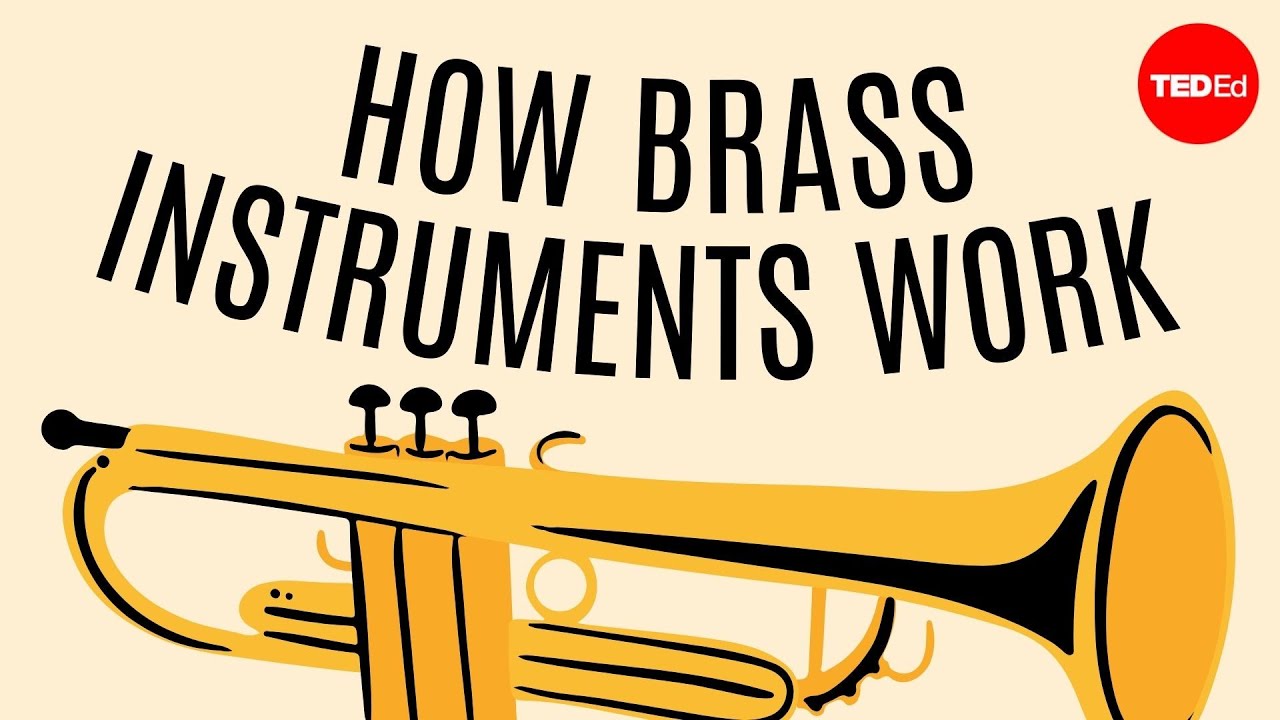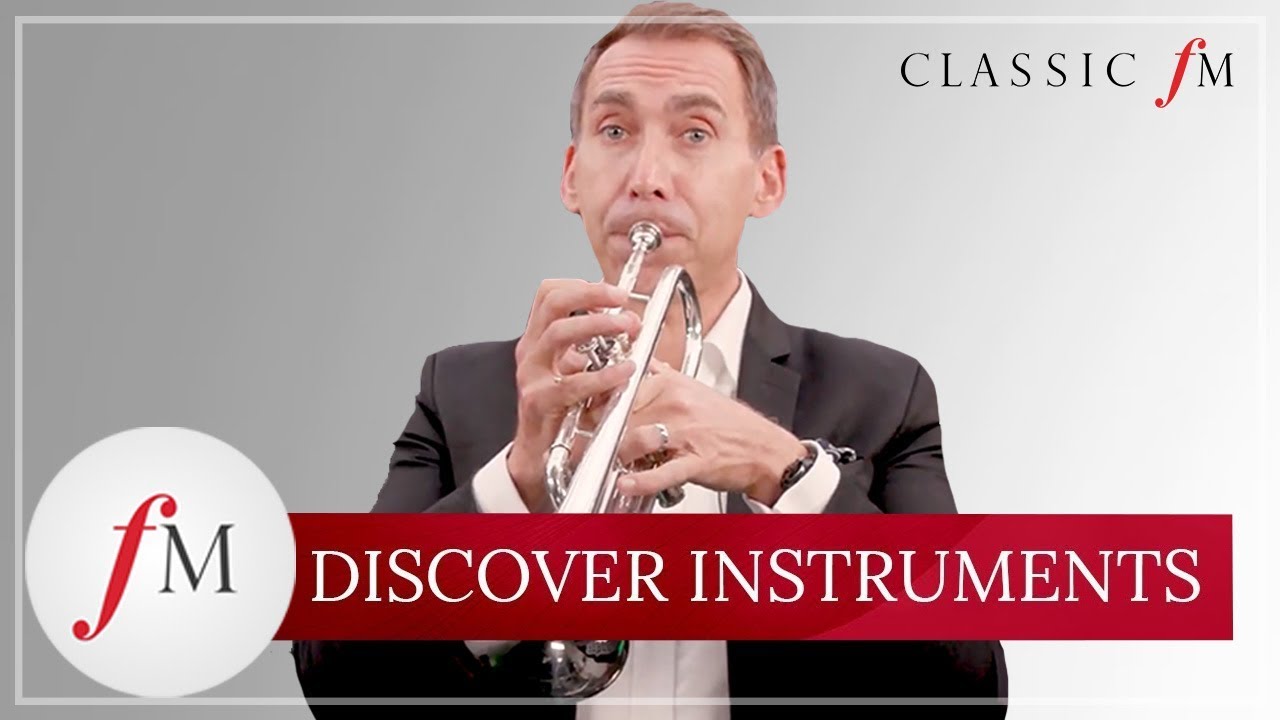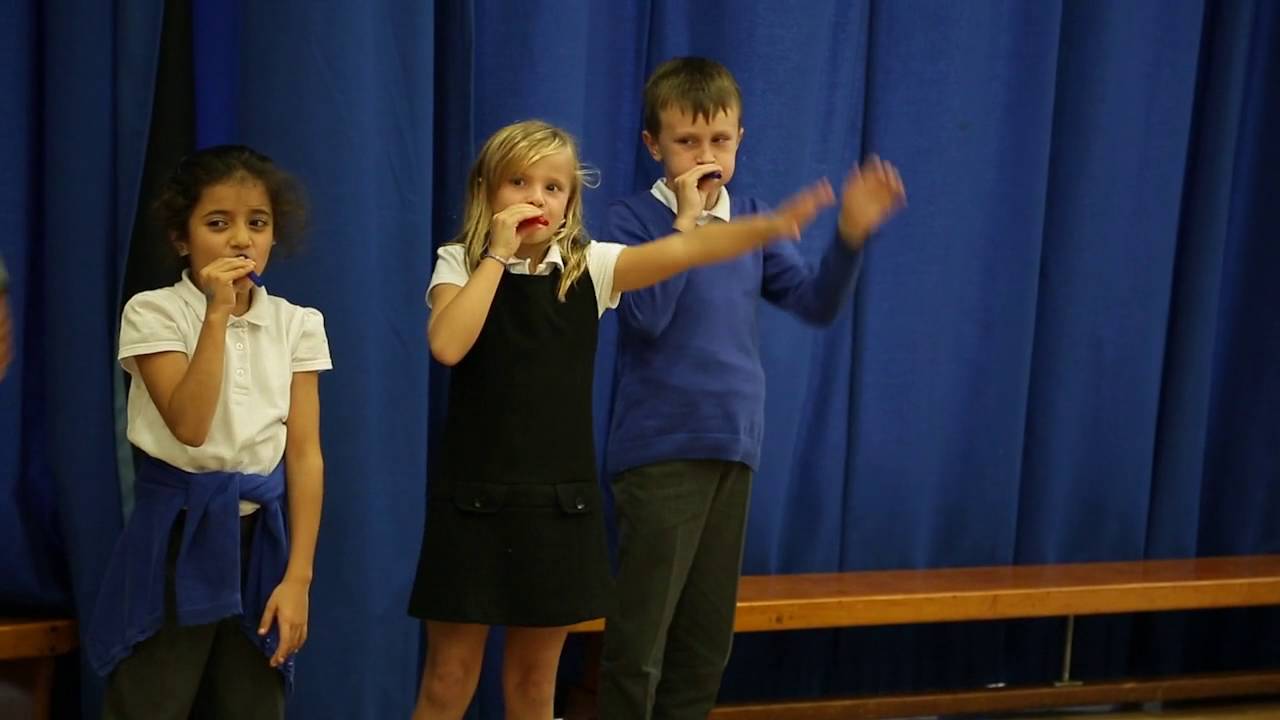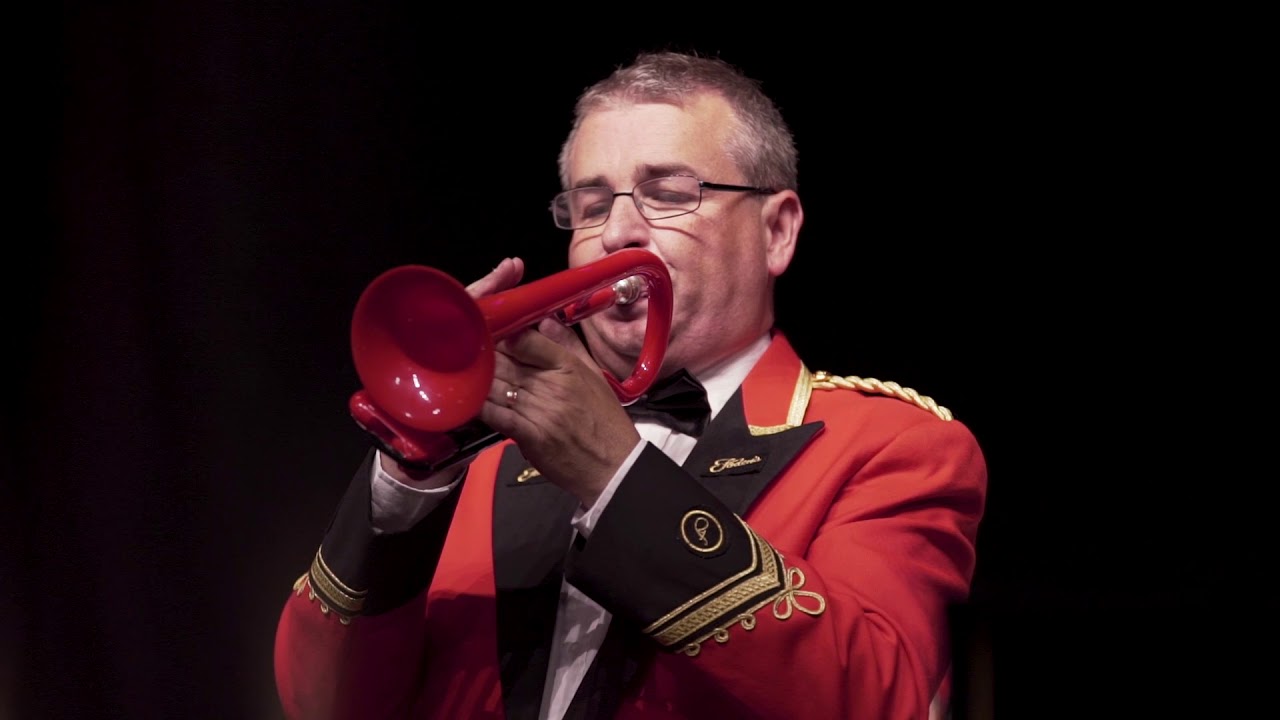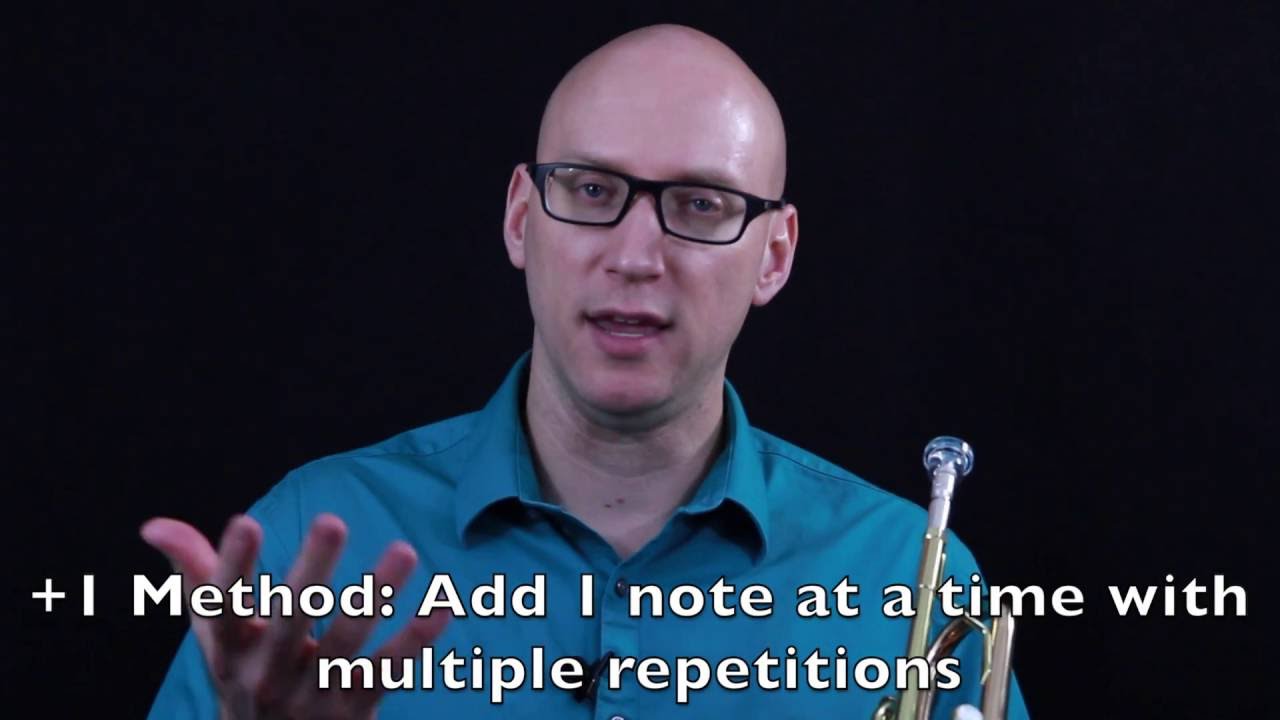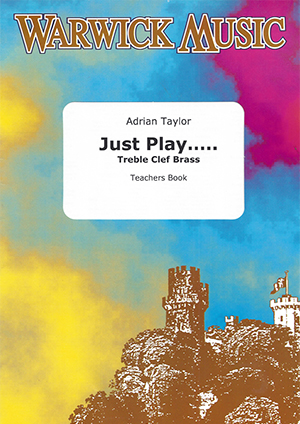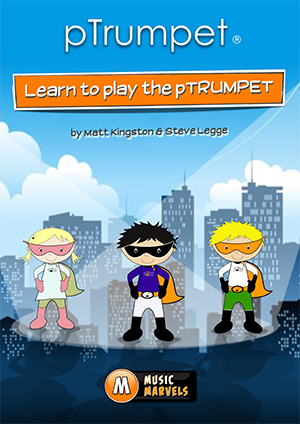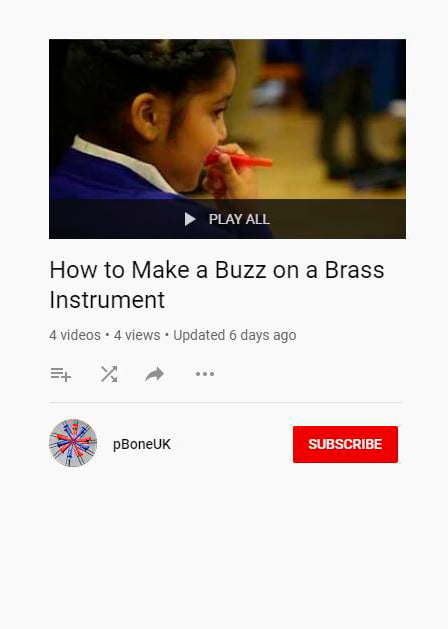How to Play Trumpet
If you are starting to play the trumpet, you've come to the right place. We will help you understand how the trumpet works, the different types of trumpets, and how to create your first sounds.
We will also give you access to a host of free trumpet resources, including free sheet music, scales and fingering charts, and video guides to spark your passion for the trumpet.
.jpeg?width=674&height=449&name=pTrumpet_Schools_71%20(TinyJPG).jpeg)
What is a trumpet?
The trumpet is the oldest and most popular member of the brass instrument family. The trumpet has been around in some form for over 1,500 years. In fact, trumpets were found buried with the pharaohs in Ancient Egypt!
By far the most common type of trumpet is the modern Bb trumpet. This instrument was first invented about a hundred and fifty years ago and hasn’t really changed that much since.
Nearly every trumpet player begins their journey on a Bb trumpet (or its cousin the Bb cornet). The Bb trumpet can be found playing in various musical styles and ensembles including classical, jazz, rock, pop, and folk music.
How does a trumpet work?
The trumpet is a transposing instrument which means that when the trumpet player plays a written C, the note that comes out in concert pitch (same as the piano) is the key name of the trumpet. So, if a Bb trumpet plays a C then the note that comes out would be a Bb on the piano: if an Eb trumpet plays a C then the note that comes out would be an Eb on the piano.
This is complicated but it’s not anything to worry about. All teachers, composers, and arrangers of music make sure that the parts for the trumpet work properly with all the other instruments: just make sure you’re using proper Bb trumpet music when you want to fit in with other instruments.
Making a buzz
Brass instruments such as the trumpet produce a sound when the player creates a buzz with their lips into a mouthpiece. This causes the air inside the instrument to vibrate and give us a sound. A brass instrument is in essence an empty tube where the player controls the length. To change notes on this tube, players can change the buzz and control of the air.
The pattern of notes is one heard in bugle calls and is known as the harmonic series or partials. Whatever the length of the tube chosen, this pattern is unaltered. Every time you add more tubing with the valves, this pattern becomes lower in pitch. By choosing a tube length and a harmonic you can play all the notes you’ll ever need…with practice!
What are the different types of trumpets?
B♭piston valve trumpet is by far the most popular trumpet and the one most players begin learning how to play trumpet on. Like all brass instruments however, the B♭trumpet is part of a whole family of trumpets ranging from the tiny Piccolo Trumpet, which is half the length of a B♭ trumpet to the big Bass Trumpet which is twice as long as the normal B♭ instrument. Some trumpets use long, thin piston valves (like the B♭trumpet), and others short, round rotary valves but they all do the same job, adding tubing.
Most trumpets other than the standard B♭are generally used in classical music, sometimes because of their unique sounds and sometimes for historical reasons reaching back to the days before valves were invented.
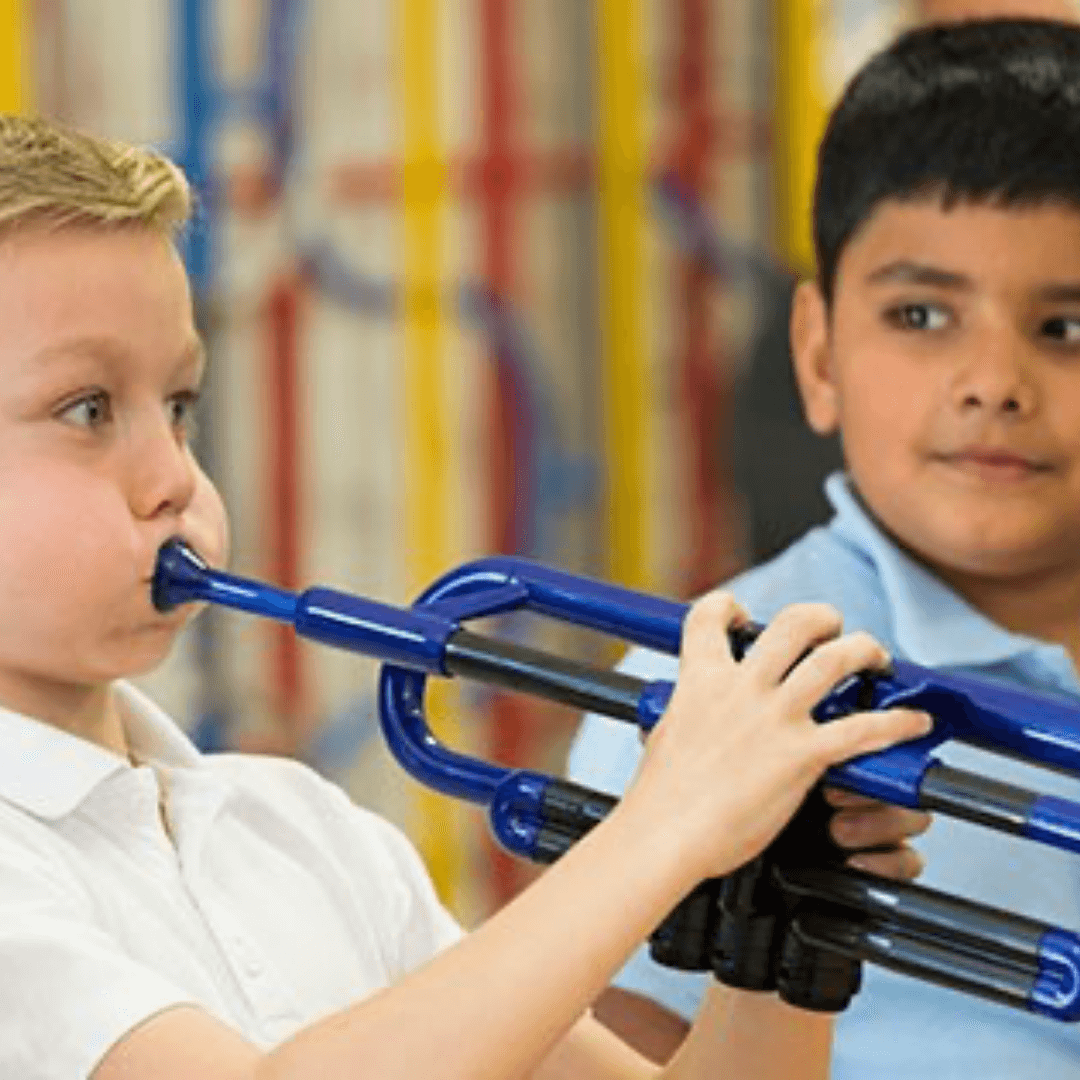
What's the difference between a trumpet and a cornet?
The main difference is the shape of the bore. Both a Bb trumpet and a Bb cornet have the same length of tubing, but the first two-thirds of the cornet has a conical bore as opposed to the cylindrical or parallel bore used on a trumpet. A conical bore constantly increases in size: this creates a softer, warmer tone than that of the trumpet.
Deciding factors when choosing to begin with a trumpet or a cornet include that the cornet is normally used in a brass band or wind band so if those traditions are strong where you live, a cornet may be a better choice. Also, the cornet’s tubes are wrapped up more tightly than a trumpet’s making the instrument shorter and a little easier to handle. Some teachers and players feel that the cornet’s conical bore makes it easier to get started buzzing and making a good sound than on the trumpet.
See and hear the trumpet!
A B♭(B-Flat) trumpet is the most common type of trumpet. The fundamental note, with no valves, is a B. A good trumpet player is good at transposing music at sight because in an orchestral setting, they will frequently need to play music written for the A B, D, E, E, or F trumpet on the B♭trumpet or C trumpet.
Music terminology for beginners
If you are learning to play the trumpet, learning these key music terms should help with your progress!
Pitch
How high or low a sound is. Usually shown as a letter: A-G and by where the written note is placed: higher or lower on the music stave or staff.
Duration
How long or short a sound is. Measured in beats and shown by the shape of a written note.
Beat
How to measure and describe the passing of time in music, the heartbeat or pulse of the music, what you tap your toe, march, or dance to. Measured in beats per minute (BPM) or expressed in an Italian term such as Presto (fast), Andante (walking pace), or Largo (slow).
Stave or Staff
The familiar horizontal lines that written music is placed on. Think of this like a ladder: the higher the note has climbed the higher the pitch it represents.
Clef
A symbol at the beginning of the music that tells us which pitch belongs on which line of the staff or stave. On trombone, we use the treble or G clef which means the second line is where the note G lives.
Bars and bar lines
Vertical lines on the staff or stave, bar lines help us organize time by dividing the horizontal format of the music into bars.
Time signatures
These numbers at the beginning of a piece of music tell us how many beats are in each bar (top number) and what type of note each beat is made from (bottom number). i.e. 44 – four crotchet beats per bar.
Getting started with the trumpet
This course of 13 lessons is for total trumpet beginners who are picking up the instrument for the very first time! By the end of this course, you’ll know how to make a sound on the trumpet and you’ll be playing your first melodies and improvising your own ideas.
This course is currently FREE with the code: WARWICK100.
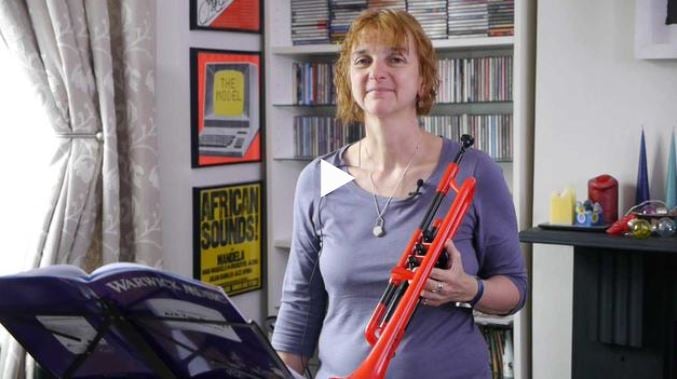
Trumpet Harmonic Series Overtones or Partials Chart
This chart shows the pattern of notes that form the harmonic series or partials for the Bb trumpet with the very lowest pitches, which aren’t usually used on the trumpet, removed (fundamentals or pedal tones). We have written the pitches out on a musical stave in order of valve combinations with the shortest length of tube (no valves or open) first. Please note that the pitches in brackets are too out of tune to be useful.

Trumpet Fingering Chart
When learning to play trumpet notes a great place to start is with a fingering chart.
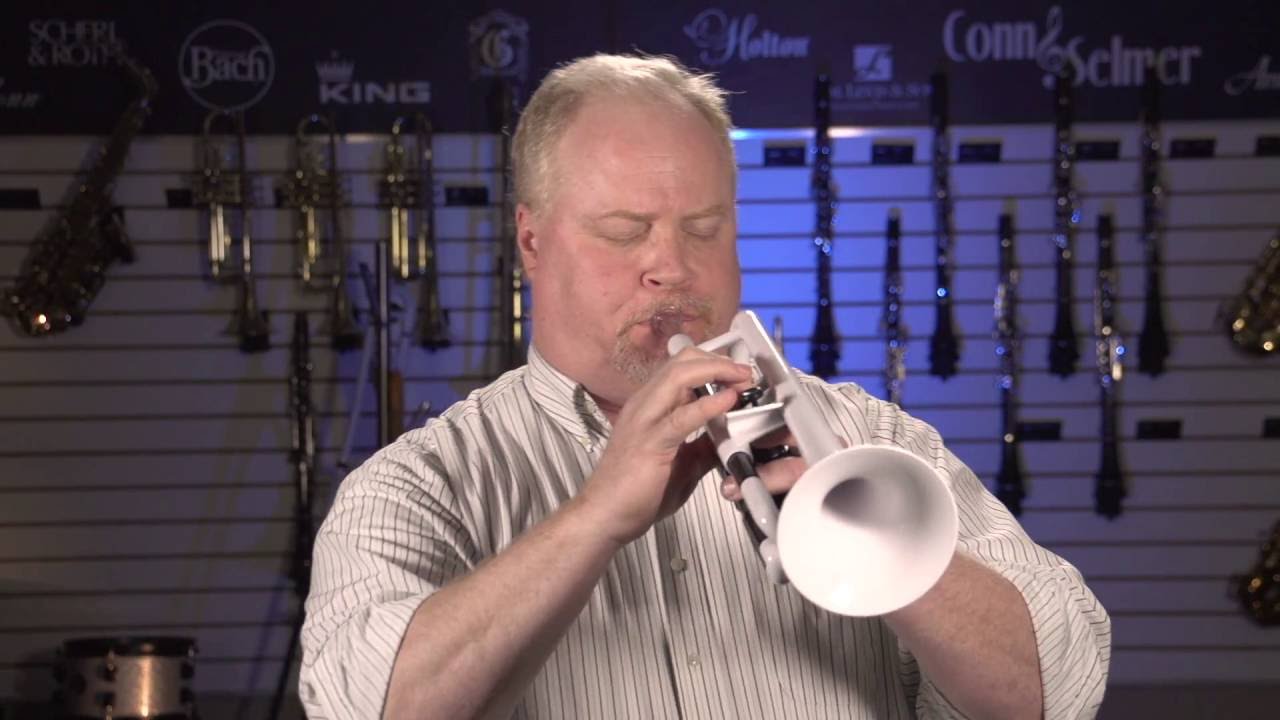
Trumpet Major & Minor Scales
Scales are one of the building blocks of music and most players learn various scales throughout their playing journey.
Learning scales help develop your listening and coordination skills alongside familiarising yourself with where each note lives on the musical stave. A good knowledge of scales is essential for more advanced music reading skills, like sight reading and memory of scales is essential to becoming a good improvising musician.
Free trumpet resources
Download these free resources and check out the videos to help learn to play the trumpet.
Just Play: Treble Clef Brass Teachers Book
Trumpet, Cornet, Tenor Horn, Euphonium, Baritone and Tuba in Treble Clef. This teaching resource has been designed for both small group and whole class teaching.
Quick Start Guide for pTrumpet
A quick and simple guide to get you started on pTrumpet with backing tracks.
Learn to Play Trumpet Video Playlist
Check out this playlist to start buzzing!
